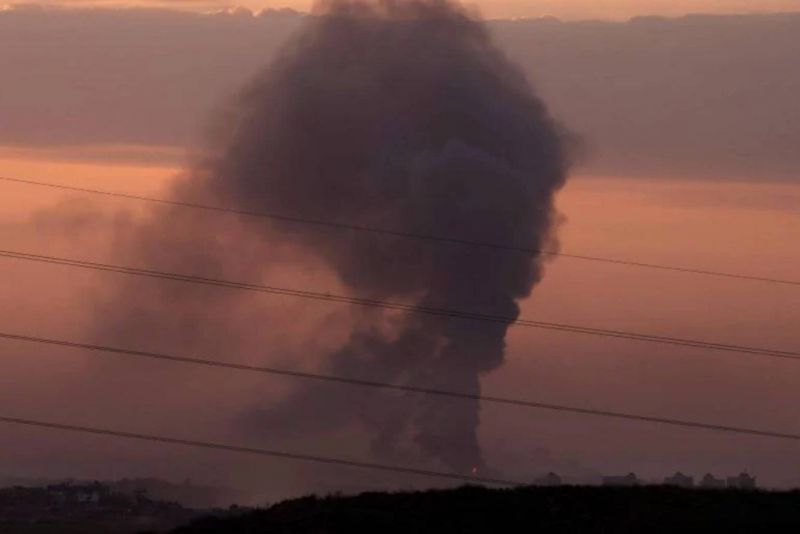
Smoke rises after Israeli strikes on the Gaza Strip, October 29, 2023. (Credit: Menahem Kahana/AFP)
The Institute of International Finance (IIF), the global organization of the finance industry, has published a study measuring the economic impact of the Hamas-Israel war on the region, with a focus on Lebanon, Egypt, Jordan, Iran, and the Israeli state.
L’Orient-Le Jour summarized the report’s main findings and predictions for Lebanon.
The IIF predicts that Lebanese economy would collapse completely in the event of an extended and prolonged conflict and Lebanon’s GDP could plummet by 30 percent in 2024.
The IIF presents three possible scenarios:
-The Israeli ground incursion remains limited and focused on specific objectives, like recovering hostages taken by Hamas and targeting Palestinian movement commanders. In this case, the organization anticipates limited fighting in the Gaza Strip, which could still last a long time and result in many casualties.
-A large-scale Israeli ground offensive takes place. The IIF dismisses the possibility that the Israeli army, even with support, would quickly defeat Hamas fighters deployed in "500 km of tunnels." It also highlighted the risk that the conflict could last for at least six months and expand into Lebanon, as well as other countries with strong Iranian influence, like Iraq, Syria, and Yemen.
-A ceasefire and the start of negotiations toward "some form of peace." The IIF has not published new projections for this third scenario and invited readers to refer to reports prepared before the start of the war.
Lebanon’s economy at risk
The IIF believes Hezbollah's actions expose Lebanon, which has been without a president for a year, to Israeli aggression. The organization anticipates that the Lebanese economy will not emerge unscathed in any scenario, even if the conflict stays in Gaza.
Before the war broke out, Lebanon's GDP was expected to increase by 0.6 percent in 2023 and 1.2 percent in 2024. The country's foreign currency reserves, the last tools available to the Lebanese Central Bank to conduct its monetary policy, were projected to reach $9 billion in 2023 and $8 billion in 2024, respectively.
In the case that conflict in Gaza remains under control, Lebanon’s GDP is predicted to contract by 0.5 percent in 2023 and by 4 percent in 2024. Foreign currency reserves would decrease to $8 billion in 2023 and $6 billion in 2024.
If the Hamas-Israel conflict escalates further, Lebanon's GDP could decline by 1 percent by the end of the year and by 30 percent in 2024. Reserves would reach $7 billion in 2023 and $3 billion in 2024.